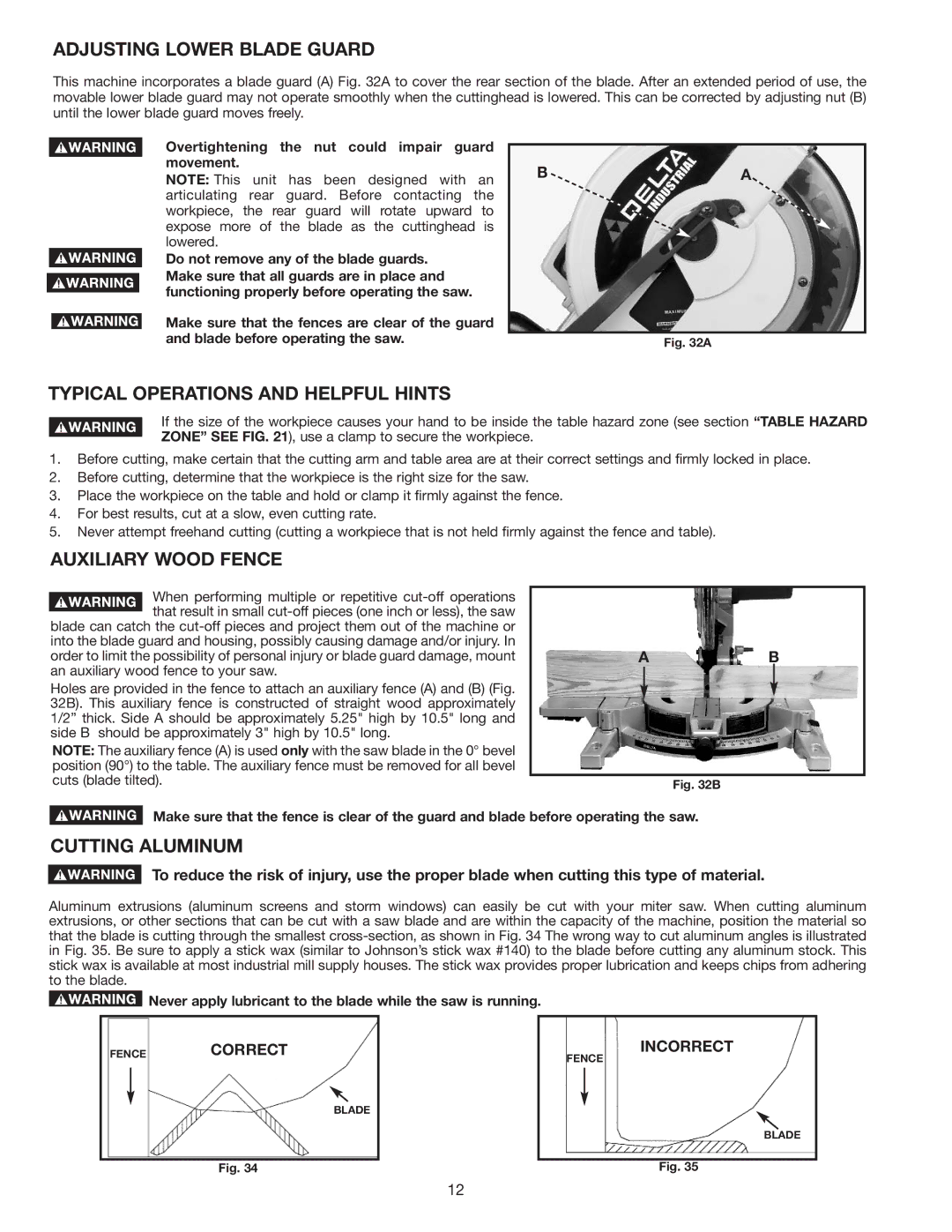36-312 specifications
The Delta 36-312 is a table saw that has gained a reputation among woodworkers and DIY enthusiasts for its robust performance and high-quality construction. This tool is designed for both professionals and hobbyists looking to achieve precise cuts in various materials, making it a versatile addition to any workshop.One of the standout features of the Delta 36-312 is its powerful 15-amp motor, which provides ample power for handling a wide range of cutting tasks. This motor allows the saw to maintain consistent speeds even when cutting through denser materials, ensuring smooth, uniform results every time.
The design of the Delta 36-312 includes a massive cast iron table, which offers stability and durability while reducing vibration during operation. At 40 inches in length, the table provides ample workspace for larger projects and facilitates easier handling of sizable sheets of plywood or lumber. The surface finish is meticulously polished, promoting easy gliding of materials during cuts.
Another significant feature of the Delta 36-312 is its advanced fence system. The Biesemeyer-style fence is designed for quick and accurate adjustments, allowing users to make precise cuts quickly. This fence can be locked securely in place, ensuring that it will not shift during use, which is crucial for maintaining cutting accuracy.
The saw also integrates a riving knife technology that enhances safety by reducing the risk of kickback. This feature allows for smoother operation and is an essential aspect of modern table saw design. In addition, the saw includes a dust collection system that helps maintain a cleaner workspace by minimizing sawdust during operation.
For ease of transport and maneuverability, the Delta 36-312 is equipped with sturdy wheels, allowing it to be easily moved around the workshop or stored away when not in use. The assembly process is relatively straightforward, with most components easily fitting together without the need for specialized tools.
Overall, the Delta 36-312 represents a blend of power, precision, and safety features that cater to a wide range of woodworking needs. Its combination of a powerful motor, stable table, advanced fence system, and safety technologies makes it a standout choice for anyone serious about woodworking, whether they are professionals or hobbyists seeking to elevate their craft.

